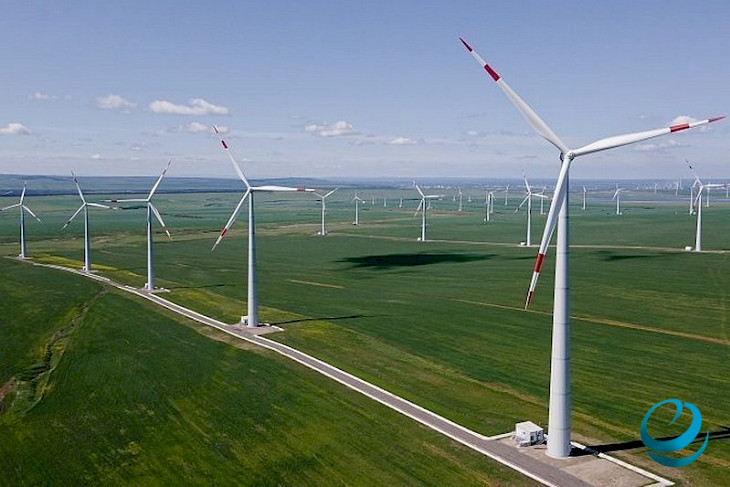Uzbekistan will build 10 wind farms worth $11 billion by 2030. This is reported by the press service of the President of Uzbekistan.
In recent years, 10 solar and wind power plants with a capacity of 2.6 gigawatts have already been launched in the country, in which $2 billion has been invested.
By the end of the year, it is planned to connect another 1.5 gigawatts of capacity to the network, which will increase the share of "green" energy to 15%.
In recent years, Tashkent has been actively developing the renewable energy sector (RES), striving to meet the growing needs of its dynamically developing economy.
Particular attention is paid to Karakalpakstan, a region with enormous potential for generating clean energy.
Rapid progress in the field of renewable energy sources
Karakalpakstan has unique natural conditions for the development of alternative energy. According to experts, the potential of the region allows to generate up to 680 GW of solar and 120 GW of wind energy.
Taking into account these advantages, the Government of Uzbekistan has developed a large-scale program for the construction of 10 large wind farms in Karakalpakstan by 2030.
The total capacity of these facilities will be 10.3 GW, and the volume of investments is estimated at $11 billion.
First steps towards the implementation of ambitious plans
Several landmark projects have already started in the region:
- The Chinese company "Sany Renewable" has started the construction of a 1 GW wind farm in the Kungrad district. The cost of the project is $1.2 billion.
- Together with Saudi ACWA Power, a project is being implemented to build a 200 MW wind farm with a 100 MW energy storage system in Beruni and Karauzyak districts. Investments in this facility will amount to $250 million.
Localization of production is an additional incentive for the industry
In parallel with the development of generating capacities, a production base for the production of components of wind power plants is being created in Uzbekistan.
Construction of enterprises that will produce parts for wind turbines has begun in the Kungrad district of the Republic of Uzbekistan. This will allow not only to localize production, but also to create import-substituting products worth about $100 million.
Thus, Uzbekistan demonstrates an integrated approach to the development of renewable energy, combining the construction of generating facilities with the creation of its own production base.
This not only strengthens the country's energy security, but also stimulates the development of new high-tech industries.
Are there any similar projects in other Central Asian countries?
The development of renewable energy sources (RES) is becoming an increasingly important area for the countries of Central Asia.
Kazakhstan:
Kazakhstan is the leader in Central Asia in the development of renewable res. The country has set a goal of achieving a 15% share of renewable energy sources in the total energy balance by 2030 and 50% by 2050.
Main projects:
- Solar power plant "Saran" with a capacity of 100 MW in Karaganda region.
- Zhanatas wind farm with a capacity of 100 MW in Zhambyl region.
- Solar power plant "Nura" with a capacity of 100 MW in Akmola region.
Kazakhstan is also developing small hydropower and biogas plants.
Kyrgyzstan:
Kyrgyzstan mainly relies on hydropower, which provides about 90% of the country's electricity. However, the country is beginning to develop other types of renewable resers.
Key projects:
- Solar power plant with a capacity of 1 MW in Osh region.
- Plans for the construction of a 50 MW wind farm in the Issyk-Kul region.
Tajikistan:
Tajikistan, like Kyrgyzstan, is heavily dependent on hydropower. However, the country is beginning to diversify its energy sources.
Main projects:
- Solar power plant with a capacity of 5 MW in Sangtuda district.
- Plans for the construction of a 30 MW wind farm in the Sughd region.
Turkmenistan:
Turkmenistan, which has significant natural gas reserves, is developing renewable resilers more slowly than other countries in the region. Nevertheless, the country is beginning to show interest in this area.
Projects:
- 10 MW solar power plant in Akhal velayat.
- Studies of wind energy potential in the coastal areas of the Caspian Sea.
General trends:
Increasing interest in solar and wind energy in all countries of the region.
Attracting foreign investment and technology for the development of renewable res.
Gradual formation of a legislative framework to support renewable resives projects.
Striving to diversify energy sources to improve energy security.
Challenges:
Insufficient funding and limited access to modern technologies.
The need to modernize power grids to integrate renewable energy sources.
Competition with traditional energy sources, especially in fossil fuel-rich countries.
In general, Central Asian states show a growing interest in the development of renewable res, although the pace and scale of this development vary.
Kazakhstan and Uzbekistan are leaders in this area, while other countries in the region are just beginning to actively develop the potential of renewable energy.
CentralasianLIGHT.org
August 20, 2024

